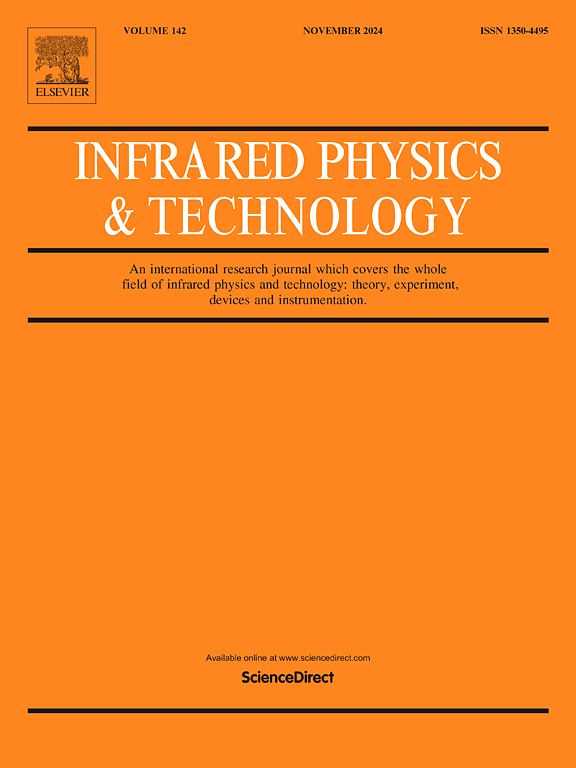Investigations on the high-performance passive terahertz imaging system based on the BIB detector
IF 3.4
3区 物理与天体物理
Q2 INSTRUMENTS & INSTRUMENTATION
引用次数: 0
Abstract
Passive terahertz detection has a wide range of prospective applications due to its advantages of non-invasiveness, no radiation, strong penetration, high resolution and high sensitivity. A terahertz imaging system based on BIB detector is developed, which includes a BIB detector module, a cryogenic module, a cryogenic optical module and a high-precision temperature control module. The detailed design scheme is carried out. Loss mechanism of cryogenic optical at different temperatures is elaborated to improve the sensitivity of the system. The coupling and matching relationships among the cryogenic system, the detector and the cryogenic optical are emphatically analyzed. The experimental test of neuronal samples is performed. Results indicate that the BIB detector and cryogenic optical work in the low-temperature of 3.2 K and 47 K, of which the temperature control accuracy are 3.5 mK and 9.5 mK, respectively. The spatial resolution of the terahertz imaging system can reach 50 μm, which has high imaging quality. The good agreements between simulations and experiments are observed. The above analyses have important practical significance for passive terahertz detection in space astronomical exploration, biological nondestructive detection, and security check.
基于BIB探测器的高性能无源太赫兹成像系统研究
无源太赫兹探测具有无创、无辐射、穿透性强、分辨率高、灵敏度高等优点,具有广泛的应用前景。研制了一种基于BIB探测器的太赫兹成像系统,该系统包括BIB探测器模块、低温模块、低温光学模块和高精度温控模块。进行了详细的设计方案。阐述了低温光学在不同温度下的损耗机理,提高了系统的灵敏度。重点分析了低温系统、探测器和低温光学器件之间的耦合匹配关系。对神经元样本进行了实验测试。结果表明,BIB探测器和低温光学工作在3.2 K和47 K的低温下,其控温精度分别为3.5 mK和9.5 mK。太赫兹成像系统的空间分辨率可达50 μm,具有较高的成像质量。仿真结果与实验结果吻合较好。上述分析对被动太赫兹探测在空间天文探测、生物无损探测和安全检查等方面具有重要的现实意义。
本文章由计算机程序翻译,如有差异,请以英文原文为准。
求助全文
约1分钟内获得全文
求助全文
来源期刊
CiteScore
5.70
自引率
12.10%
发文量
400
审稿时长
67 days
期刊介绍:
The Journal covers the entire field of infrared physics and technology: theory, experiment, application, devices and instrumentation. Infrared'' is defined as covering the near, mid and far infrared (terahertz) regions from 0.75um (750nm) to 1mm (300GHz.) Submissions in the 300GHz to 100GHz region may be accepted at the editors discretion if their content is relevant to shorter wavelengths. Submissions must be primarily concerned with and directly relevant to this spectral region.
Its core topics can be summarized as the generation, propagation and detection, of infrared radiation; the associated optics, materials and devices; and its use in all fields of science, industry, engineering and medicine.
Infrared techniques occur in many different fields, notably spectroscopy and interferometry; material characterization and processing; atmospheric physics, astronomy and space research. Scientific aspects include lasers, quantum optics, quantum electronics, image processing and semiconductor physics. Some important applications are medical diagnostics and treatment, industrial inspection and environmental monitoring.

 求助内容:
求助内容: 应助结果提醒方式:
应助结果提醒方式:


